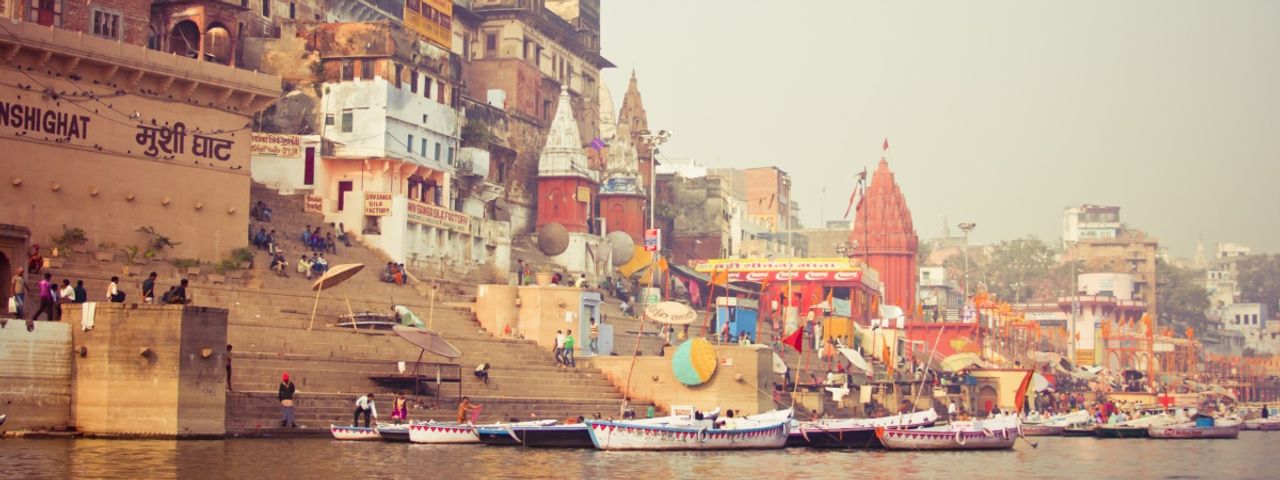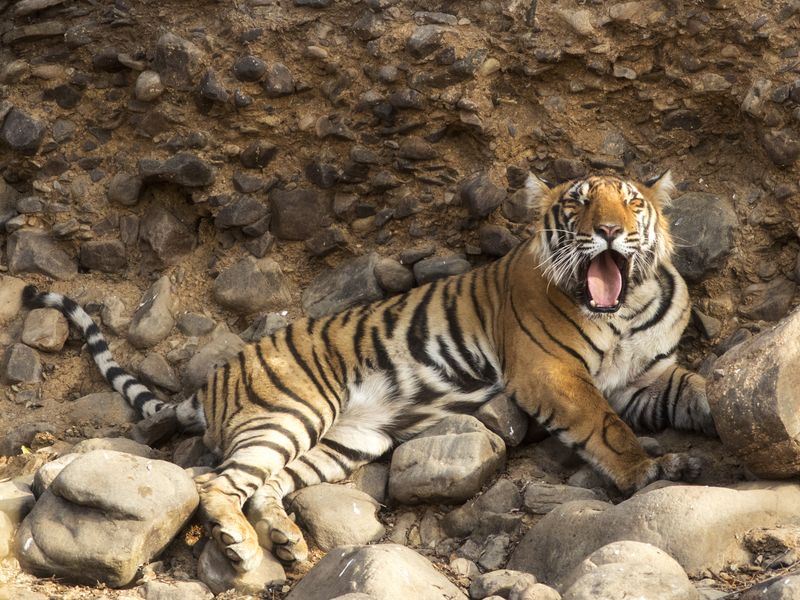When is the best time to visit India?
Generally, the best time to visit India is December through to March during the cool, dry season but always keep in mind that India is a large country with a diverse climate and varied weather conditions. In the first months of year, most of the country basks in bright, warm sunshine and rain is almost non-existent. The shoulder season months of October, November and April either side are a good second bet for large parts of the country. In return for the risk of the odd shower and higher temperatures and humidity, you'll often find far fewer tourists and lower prices for accommodation.
India weather & when to go
Pick a month below
Kashmir & Himalayas
Rajasthan & the Golden Triangle
The South
Weather seasons are becoming less predictable but peak visitor months remain more certain.
Unfollow the herd - avoid the peak months to enjoy fewer crowds, better availability, often lusher countryside and help to spread the economic benefits of tourism.
Weather overview
From the craggy heights of the Himalayas in the north to the sultry beaches of Kerala and Tamil Nadu in the south, India is a very big place. The good news is that as a result, when it's tipping it down with rain or snowing hard in one area, there's often bright sunshine and cool breezes in another.
The monsoon drops rain on large parts of the country from mid-June to early September making central and north east India in particular very hard going, with flooding a real risk. But Rajasthan in the east and Tamil Nadu in the south west are far drier and very visitable at this time of year.
December to March is typically the dry season. Vast swathes of the country are warm and sunny between these months and it rarely rains.In the far north of the country however, the winter months bring chilly temperatures and snow at higher altitude. If you want to explore the spectacular Himalayan scenery you're better off going in spring or autumn when temperatures are warmer and rains are sparse. Whilst it's still pouring in parts of India in August, here the trekking season is in full swing.
Kashmir and the Himalayas
Shimla, Manali, Srinagar, Dharamshala, Rishikesh and Jammu
With their mountainous topography, the far northern states of India experience cold winters. If you fancy a winter break with a difference, places like Manali offer skiing, whilst Shimla is wonderfully atmospheric under a blanket of snow. Days can be bright and clear, but you need to be properly prepared for cold weather. Like most of the rest of India, the monsoon brings heavy rainfall in July and August. Whilst a visit isn't out of the question at this time, trails may be muddy and mountain views obscured by fog and cloud.
The best time to visit Kashmir and the Himalayas is autumn when the monsoon is over but the chilly temperatures of winter have yet to set in. In October and November, Shimla, Manali, Srinagar and Dharamshala are warm and dry with hardly a drop of rain. Lower altitude Rishikesh and Jammu experience similar weather too. You'll find the weather in April, May and June is usually good too, so spring is also a good option for hiking through this part of India's spectacular mountain panoramas.
Mumbai and Central India
Mumbai, Pune, Nagpur, Pench National Park, Kanha Tiger Reserve, Bandhavgarh National Park
Central India tends to experience hot summers and a very wet monsoon season. During late June, July, August and early September the region experiences a lot of rain. Flash floods are not uncommon, National Parks are closed and the downpours are prolonged. You're far better off visiting other parts of India at this time of year that don't get so drenched - such as Rajasthan or Tamil Nadu.
Once the monsoon moves away, the weather improves quickly and the long, dry sunny days of November through to March are ideal for visiting the bustling cities of Mumbai, Pune and Nagpur or going on a tiger hunt in Kanha Tiger Reserve or Bandhavgarh. April, May and June are pretty good months too, particularly if you're visiting places on the coast like Mumbai where the cool winds keep temperatures down. Inland, the mercury climbs into the 30’s. But if you don't mind a little heat and are happy getting up early, it's a great time of year for game drives as the animals tend to congregate around waterholes.
Calcutta and the North East
Calcutta, Varanasi, Lucknow, Allahabad, Patna, Darjeeling
North east India's weather is similar to that of Mumbai and the centre of India. The best months for visiting places like Calcutta, Varanasi and Lucknow are November through to March. At this time of year, days are hot and dry with hardly a cloud in the sky - perfect sightseeing weather.
The weather at higher altitude in Darjeeling is settled too, but you need to be prepared for colder temperatures in January and February in particular. The region experiences heavy monsoonal rain from mid-June to mid-September. It's properly wet and humidity levels are high too; not ideal weather conditions for tramping around temples or exploring backstreets. Even Darjeeling at higher altitude tends to be shrouded in cloud and can be wet at this time of year. In the months running up to the monsoon north east India can be really hot: the mercury can rise into the 40’s during the months of April, May and June. It tends to stay hot at night too and you're best off heading into India's hill stations. Places like Darjeeling are cooler, offering near perfect hiking conditions.
Rajasthan and The Golden Triangle
Jaipur, Agra, Delhi, Jodhpur
If you're planning a trip to the Taj Mahal, the romantic rose city of Jaipur or the bustling metropolis of Delhi, the best time of year for your visit is November through to March. It's the dry season during this period and days are hot, dry and sunny - ideal for exploring eons-old cities. The mid-summer months of May and June are baking hot in Rajasthan and the Golden Triangle, and generally best avoided. Other parts of India like Shimla in the far north are cooler, so probably a better bet during the summer. Whilst the monsoon from mid-June to early September tips large amounts of rain on central and north east India, this part of the country escapes with relatively mild downpours. In places like Delhi, Jaipur, Agra and Jodhpur, you'll certainly encounter rain, but it's infrequent and doesn't tend to last long. The upsides to a visit during monsoon season are lush scenery, far fewer visitors at popular sites and more manageable temperatures.
Kerala, Goa and the South
Arambol, Palolem, Chennai, Periyar National Park, Nilgiri Hills
The best time to visit southern India is December through to March. It's the dry season and you're guaranteed wall-to-wall sunshine and perfect temperatures for lazing on the glorious beaches and exploring the fascinating backwaters. Temperatures start to climb in April and by late May the humidity can be intense, before the arrival of the monsoon. June, July and August are really wet on the west coast in Goa and Kerala and they're not the best months to visit, though locals claim the wetter weather is ideal for Ayurvedic massage treatments. Alternatively, consider heading for a different part of India - Rajasthan gets far less rain during the monsoon. Tamil Nadu is also much drier between June and August than other parts of southern India. It gets most of its rain in October and November during the second 'retreating' monsoon. October and November in Goa are good months. Outside the peak season, they're still pretty dry. The weather at this time of year in Kerala is less predictable and you should expect the odd burst of rain.

